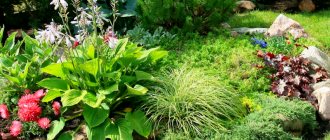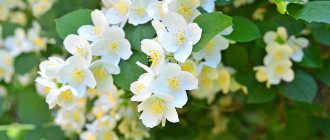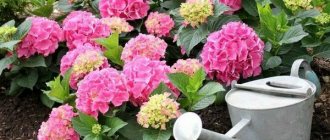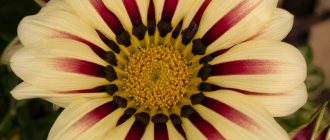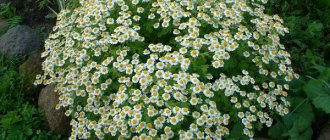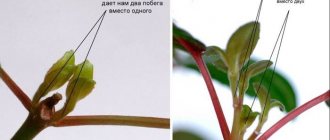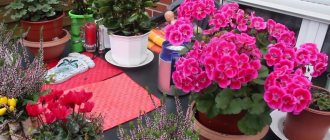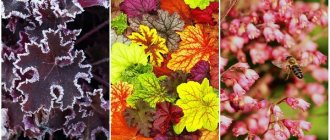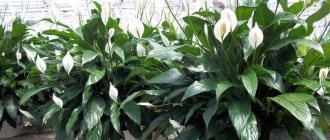A well-groomed garden and the facade in front of the house is the dream of many gardeners. To implement it, you need to start with landscape work. Hostas are considered the most popular used for decorating not only garden plots, but also park areas. These decorative herbaceous perennial plants are so popular and irreplaceable that it is impossible to imagine a single nook of the garden without them.
Hosta was previously called funkia; its main places of growth were China, Korea, and the Far East. The variety of herbaceous perennial includes more than 60 species of hosta, it is known in all corners of the globe. Why is it attractive? The leaves and their color are the main decoration of the hosta. In the garden, the landscape tricks of the designers are manifested in its harmonious juxtaposition with many beautifully flowering plants and tall cereals.
There are many varieties of hosta. Even classic perennial bushes with green leaves are not the same. The drawings on them have dark and light colors. Borders, stripes, white streaks in various variations create unique combinations on the leaves, changing the appearance of the plant.
What is the best thing to combine hosta with when planting?
Many plants can be planted next to hostas, but there is a nuance (besides the obvious - the coincidence of requirements for living conditions). Don’t forget to immediately check what size the host will reach when it grows up - the leaf span of an adult plant can be very, very significant. Here's an example of one of my own long-standing missteps:
Everything is fine, but the primrose is planted too close to the host. At that time, I didn’t take into account that as the hosta grew, it would cover all the free space between two astilbes (by the way, they are wonderful neighbors). The primrose had to be replanted. Therefore, relatively small plants such as lungworts, primroses, daisies and others should be planted at some distance. In the summer it all looked like this (the hosta is still young - with age it has become much larger):
But small-bulbous plants (muscari, chionodoxa, pushkinia, scillas, crocuses and others), as well as daffodils (that is, everything that does not require annual digging - tulips will not work) can be planted closely: when they bloom, the hosts are not yet visible , and by summer its powerful leaves will cover the unsightly “bald spots” in place of the withered foliage of the bulbous plants. And here is an option where late muscari grow next to compact “blue” hostas:
White sedum spreads under them (both it and various forms of false sedum are excellent neighbors for hostas)
In the background is Byzantine chist, which also sits well next to the hostas. For example, like this:
Hostas and cypress spurge look good next to each other (just be careful that it doesn’t grow too much)
Here are the hostas in the shade of the ferns; on the side - variegated sedge (in any case, that’s what the neighbor who shared it with me called this plant), perhaps experts will clarify the name):
Combinations of hosta with ground cover plants are very successful (both wild ones, such as ivy bud, and cultivated plants, such as sedums, periwinkles, and others, are also suitable). In general, even the entire seven-dacha community probably won’t be able to compile a complete list of everything that can be planted next to hostas))) There are a lot of options!
Exactly, there are many combinations with hosta. The main thing is that there is a contrast then it’s beautiful. That is, the leaves of the hosta are oval or rounded and whole, which means we plant a leaf with the opposite shape next to it (cut-leaved or openwork). The main thing is not to forget that the leaves of the hosta are very dense and good rain is needed for the water to reach the roots of the hosta. Especially the blue giants.
Here in the photo of the host is a blue giant, and next to it is a kitten. You can see for yourself that nothing grows nearby. And this hosta is still a baby, she is 2 years old. It will increase a little more.
Ferns grew next to the hosta, but I had to move them and will move them again.
And here’s what I wrote about: the contrast of leaf shape and color
In general, the hosta is considered a universal “garden decorator”. Purely in form, most plants are compatible with it. Only, of course, not those who prefer open sun. That is, they will look good next to each other, but the host herself will suffer. And also - depending on the size of the hosta. There are very large hostas, with huge leaves, next to them only tall lilies, delphiniums, phlox, daylilies, onions, ferns, rhododendrons and similar plants will look good and will not suffer from it. The main thing is that the hosta companions are not undersized - otherwise it will cover them over time, even if the variety is relatively small. Sometimes, in any case, you have to tear off some of the leaves of the hosta from time to time so that it does not step on neighboring plants. By the way, you can staple a very beautiful tablecloth from torn hosta leaves - for one day, of course, but suddenly you are expecting guests, and this will be an original accessory.
The main rule of combination
The main thing you need to pay attention to when creating landscape objects at your dacha is the color of the hosta. Depending on the variety, the color of the leaves of this plant can vary greatly. In some hostas it is light green, almost salad green. Others have a bluish-gray color, with a noticeable matte coating on the foliage. There are variegated hostas, the leaves of which are decorated by nature. There are those whose leaves are almost lemon-colored. Of course, such a palette does not have a universal combination, so the color of the host must be taken into account. Otherwise, the landing will look disharmonious and untidy.
Below you will find a few more recommendations regarding what plants you can combine hosta with in certain plantings.
- If you plan to plant a hosta near a pond, marsh irises will be an excellent partner for bright green bushes. Both the first and second plants will be more than comfortable near water.
- If you use hosta to decorate a shady area, it can be combined with morning glory in a flower garden. In this case, excellent partners for hosta are such plants as Turkish carnation, bright lungwort or kobeya.
- Excellent flowering partners for decorative hosta are damask and lavender. But in this case, it is better to give preference to dwarf or short hostas. Medium-tall varieties of perennials are also suitable.
Another option for creating a flower garden in the shade is a combination of plants in which the so-called forest accent is clearly visible. Hosta gets along well with forest flowers like forget-me-nots and lilies of the valley. Gorlyanka, marigold, primrose and zelenchuk - all of these are also quite popular partners for the decorative perennial we are discussing. In the context of this conversation, we cannot remain silent about ivy, in combination with which hosta creates amazing carpet plantings. Periwinkle and liverwort are from the same opera.
Hosta is never combined with tulips and other plants whose bulbs require annual digging. But bulbous plants that do not need to be dug up (for example, scillas, crocuses, chionodoxes and muscari), on the contrary, will become excellent partners for green spreading bushes. At the same time, it is very important to plant the bulbous plants close to the hostas: when the first ones bloom, the hosta will not even appear from under the ground, but when the flowering of the bulbous plants suddenly ends, the leaves of the hosta will skillfully cover the resulting bald spots.
You can complement the planting, one of the main participants of which is the hosta, with sedum creeping along the floor. It could be white sedum or false (or any other) variety of this perennial. The chist, which we already mentioned above, is always better to place in the background, as if creating a grayish background for the hosta. Looks great next to hosta and cypress spurge. True, in this case you will have to ensure that the neighbor does not grow too large. Otherwise, he may prevent the “shadow queen” from growing.
Hostas in the garden - landscape tricks
A well-groomed garden and the facade in front of the house is the dream of many gardeners. To implement it, you need to start with landscape work. Hostas are considered the most popular used for decorating not only garden plots, but also park areas. These decorative herbaceous perennial plants are so popular and irreplaceable that it is impossible to imagine a single nook of the garden without them.
Hosta was previously called funkia; its main places of growth were China, Korea, and the Far East. The variety of herbaceous perennial includes more than 60 species of hosta, it is known in all corners of the globe. Why is it attractive? The leaves and their color are the main decoration of the hosta. In the garden, the landscape tricks of the designers are manifested in its harmonious juxtaposition with many beautifully flowering plants and tall cereals.
There are many varieties of hosta. Even classic perennial bushes with green leaves are not the same. The drawings on them have dark and light colors. Borders, stripes, white streaks in various variations create unique combinations on the leaves, changing the appearance of the plant.
How to plant hostas beautifully
The most unpretentious of the plants that are planted on a personal plot or in a garden is considered to be the hosta. It grows even in the most shaded areas. Many of its varieties thrive both in sunlit areas and in corners of the garden with diffused but bright light.
Variety of hosta species
Flower growers recommend determining the best place to place the hosta by planting it in different parts of the garden. Next year it will become clear in which of the selected areas the plant feels better. This can be determined by the color of the foliage. Next, you can transplant the grown bush to the chosen location. The perennial is unpretentious in care and tolerates changes in habitat painlessly. If necessary, hosta can be grown in a container for the purpose of landscaping balconies and terraces.
Advice. It is better to grow a perennial plant by dividing the rhizomes. Experienced florists believe that this method is more convenient than growing hostas from seeds.
Planting this herbaceous plant in carpet design looks beautiful. Its large leaves prevent weeds from growing in the garden. Carpeting in this case is considered not only decorative, but also useful.
Neighborhood with conifers and juniper
Planting hostas with ornamental shrubs
The popularity of ornamental shrubs is due to their unpretentiousness in maintenance and visual appeal. And thanks to the variety of their types, sizes and colors, you can create a large number of landscape design options using luxurious hosta.
Well-chosen varieties look great with spirea, rhododendron, decorative barberry, especially with bright red or yellow leaves, and silver hosta looks great with hydrangea.
Hosta, when planted together with ornamental shrubs, is planted in the foreground. It not only provides a contrast to the colorful inflorescences, but also covers the lower bare shoots of the bushes.
What to plant next to hostas
What does hosta go with in a flowerbed? These ornamental plants get along well with all flowers, so the question of what to plant next to the hosta does not arise. Previously, this perennial plant could rarely be found in flower beds and flower beds. It was considered something special among the usual plants and flowers. Modern varieties decorate flower beds and paths. They look wonderful surrounded by roses, peonies, hydrangeas, and irises. A good tandem of hostas in a flower bed with geraniums. These plants are a decoration for any flower garden: from a ceremonial composition to a shady corner in a landscape style.
Juniper and barberry
This combination may also contain other shrubs and plants, for example, thujas or pine trees. When choosing varieties, people most often pay attention to Thunberg barberry, rocky (Skyrocket) and medium juniper (Mint Julep). The number of elements in a flower bed is usually 5, 6 or 7. Larger plant compositions are used when designing large areas. Recommended flowering plants are rhododendrons, hydrangeas, primroses.
Designers recommend giving preference to dwarf barberries, for example, Arthropurpurea Nana, Harlequin, Kobold, Minor, Aurea. They have a denser crown and are characterized by slow growth.
Hosta in landscape design
Designers use a variety of hosta varieties in their compositions. They are attractive because they tolerate low temperatures well, are frost-resistant, which means they are a perennial decoration. These perennials are divided into varieties with original glossy, waxy and matte leaf coating. There are varieties with very large leaves, and these ornamental plants also have small leaves. The type of leaf is also varied. Its structure can be smooth, embossed, wrinkled and with wavy leaves.
Interesting. There are miniature varieties of perennials, the height of which is just over 10-15 cm. They appeared in the last decade and have taken root in home floriculture. Subspecies of hosta varieties are used in garden landscapes.
It all depends on the height of the herbaceous perennials. Ground cover - have a height of up to 20 cm, border - from 20 to 30 cm, medium-height - 30-45 cm and high - from 45 to 80 cm. With their help, you can, using optical illusion, revive the darkest corners of the garden, creating multi-tiered compositions.
Hosta in the flower garden
Thanks to the beauty of their leaves, herbaceous bushes are not only a decoration for gardens. The leaves are used to create original bouquets. This large-leaved plant looks beautiful both growing alone and in monogroups, creating complex compositions from different varieties. Landscape designers use hosts:
- when creating flower beds;
- as a border plant, decorating the front edge of the composition;
- in freely growing groups;
- in rockeries;
- like tapeworm or large spots on the lawn;
- in the design of regular mixborders and flower beds;
- in rock gardens and Japanese-style gardens;
- in creating small decorative ponds,
- in dividing the flower bed into sectors;
- in the form of carpeting or a green “pillow”.
Hosts at their summer cottage
Rectangular high flowerbed with spirea
This type of flower bed can be presented in several variations:
- a high stone container (marble, granite) with sides, inside of which earth is poured and juniper, other conifers and spirea are planted on it;
- a structure made of stone and mesh with an earthen “cushion inside”;
- a classic rectangular flowerbed located on a hill and fenced off by a fence;
- composition along a fence or garden path.
Of course, there are plenty of options. The general rule for all such schemes is that low grades are placed at the edges, higher ones in the depths. This principle also applies to cascading garden design solutions. Varieties of spirea for combination with juniper: Nippon, gray, birch-leaved, Vangutta.
1. Thuja occidentalis “Globosa” 2. Cypress pea 3. Spiraea Boumalda “Froebelli” 4. Scaly juniper “Blue Сarpet” 5. Hybrid iris.
By following the rules for forming flower beds and landscape compositions, you can get a truly spectacular garden decoration. Designers call the best color combinations yellow-green, yellow-white, emerald-lemon, as well as combinations of pine needles with red, purple, yellow and orange flowering plants.
Flower garden or flower bed with hostas
The herbaceous shrub will not get lost in a bright flower garden. The plant creates interesting compositions in the colorful flower beds, the originality of which receives its share of admiration. Flower beds fenced with borders of greenery look more attractive, especially when hosta is involved in the design of flower borders. With the help of designers, you can choose the right varieties with different sheet colors and their location in the border. This will be the key to the beauty and uniqueness of the flower garden.
Hosta border
Border plants are involved in creating a landscape near a house on a personal plot. They separate decorative and functional areas. Hosta is considered a wonderful plant, often used to create a green border. Designers suggest making compositions of at least three of its types with different height levels, planting along the paths. The main thing is the compatibility of the selected varieties of this perennial plant in shape and color, thereby creating a unique pattern. Border varieties include miniature Blue Cadet plants with blue leaves or Light Up.
When creating a beautiful and durable garden design, you should listen to the advice of landscape designers regarding the choice of planting site, lighting, and proximity of plants.
Proper care of a flower garden with hosta
The main guidelines when planting hosta and its combination with other annual and perennial plants, from a technical point of view, are soil moisture, soil type, location and location of groundwater. That is, the same parameters that you take into account when choosing a location for any representative of the flora on your personal plot. The plants you combine with hosta do not necessarily have the same flowering period. It will be better if the flowers replace each other. But it is very important that the flowerbed partners agree on issues that relate to the habitat. Otherwise, by watering the hosta, you will harm your partner who does not like moisture. And vice versa.
If we think from the point of view of the hosta, then this plant prefers:
- country locations that are well shaded in the afternoon;
- soil with a neutral reaction or slightly acidic soil;
- moderately moist soil in which moisture does not stagnate, but which does not have time to dry out from watering to watering.
With the arrival of cold weather, hostas do not need to be covered. In Ukrainian realities, they spend the winter quietly without any shelter. These ornamental plants are frost-resistant, so they cope well with temperature changes and are not afraid of winter weather. The hosta is ready to grow in the same place for ten years in a row. Especially if you feed it with organic matter once a year. For example, in the middle of the spring season or at the beginning of the autumn.
Hostas, whose leaves are colored blue and gray, love shade most of all. And varieties with bright green and yellow foliage, as well as multi-colored hostas, prefer partial shade, which allows them to reveal all their decorative potential.
Hostas are not only surprisingly unpretentious plants. You have probably already seen that they are universal in terms of combination with other flowers and decorative flora that can be found in a country garden. The main thing is to choose the right hosta variety so that the color and structure of the foliage, as well as the height of the bush, harmoniously combine with the appearance of other annuals and perennials, creating lush and beautiful compositions. And it’s never a sin to play with contrast: if the hosta you choose has heart-shaped leaves, plant a plant with an elongated leaf blade next to it. And if the hosta has boat leaves, choose a carved partner or neighbor with rounded foliage.
Compositions with hostas in the garden: 15 examples with photos
Hosta is a spectacular “decorator” of gardens. Whatever type of hosta you choose - low-growing, large, plain, blue, with veins - it goes well with any plants and flowers. Hosta transforms flower beds with ferns and cereals, adds zest to mixed borders with conifers, frames paths and flower beds with tulips, astilbes and irises. In this article I will tell you how best to plant hosta and give examples of the best compositional combinations of hostas in site design.
Features of planting hosta
Hosta is perfect for planting near a pond, in the shade, as a soloist or in a group with other plants. It is better to plant hostas in fertile, moist soils. The plant is winter-hardy and disease resistant. It grows quietly in one place for 10-15 years without losing its decorative effect. Easily propagated by seeds and dividing the bush.
Ideal place to plant hosta
Experienced gardeners do the following: they plant several bushes in various areas of the site, and observe how they feel, their growth rate, color change and flowering. And where the host produces the best results is the “ideal” place.
- Hosta grows well in both shade and partial shade.
- Many species thrive in bright sun.
- Blue hostas should only be planted in a shady corner.
- In hostas with white veins, bright sun causes burns.
IMPORTANT
The same hosta variety planted in the shade and in the sun will have a different color.
Ideal for hosta are places with moist soil (near bodies of water, in the forest area of the garden).
Tips for planting hostas
1. It is better to plant hosta in the spring, but it also takes root well in the summer.
2. For planting, you need to prepare a landing hole:
- The hole should match the size of your seedling. Make sure that there is room for the roots, and do it with a reserve, because the hosta grows quite quickly.
- We fill it with compost and peat mixed with garden soil taken out of the ground. If the soil is clayey, then it is better to lay a drainage layer at the bottom of the hole.
3. Before planting, remove all weeds and dig up the soil onto the bayonet of a shovel.
4. We spill the planting hole with water and place the seedling without deepening the root collar and straightening the roots to the sides. If the seedling is from a purchased container, then we place it together with a lump of earth so that the base of the plant remains in the same place where it was in the pot (do not bury it).
5. Then we press the soil a little with our palms and water again. If the ground sags a little, then fill it up and level the surface.
Photo: hosta in garden design
Caring for hostas after planting
After planting, it is better to mulch the surface - this will make the plant more comfortable, and you will have less hassle with frequent watering and weeding.
- Sometimes the ground around the hosta is mulched with agrofibre. But this is closer to professional landscape design.
- Amateur gardeners can use mulch, such as sawdust or pine chips. They will protect the plant from pests such as slugs, which love damp and cool places.
If the soil dries out quickly, the hostas will need to be watered deeply and frequently. They love to drink!
Photo: mulching hosta with agrofibre
Compositions with hosts: examples and photos
Below are examples of compositional combinations of hostas with other plants and flowers.
Roses on the background of the hosta
Typically, roses have always been planted in a rose garden, and this is no coincidence. In a monoculture, it is easier to meet the plant’s requirements for soil quality, fertilizing, watering and treatments for diseases and pests.
The rose is certainly beautiful on its own, but the hosta background makes it even more attractive. It is known that roses love a lot of sunlight and do not tolerate excess moisture. Hostas have absolutely opposite requirements for cultivation. However, it is quite possible to create a flowerbed from these two beautiful plants if you adhere to the following recommendations:
- Choose hosta varieties that can easily tolerate exposure to sunlight: Sum and Substance (the leaves do not lose their decorative appearance, but the color changes from light green to golden yellow), June Fever (the leaves acquire a more saturated color), Sun Power (the most light-loving variety) , Blue Ivory (the blue leaves of the variety become paler when exposed to sunlight).
- Water often, then mulch.
- Plant the hostas so that on a sunny day they are in the shade of trees, shrubs or the rose bushes themselves. More often, in flower arrangements with roses, the hosta serves as their edging.
Hostas in the garden (landscape tricks)
Nature has created an innumerable number of different plants. Moreover, in the natural environment there is no dissonance in the combination of different neighboring cultures. With a good imagination, you can take a lot from the wild to create a paradise on your property. For example, hostas in the garden and landscape tricks for growing flowers are of great interest in the design of a flower plot. The use of hosta in garden landscape design when decorating flower beds has many options. The abundance of varieties and types of this crop (about 50 species and more than 700 varieties) will help you create absolutely charming compositions.
Landscape tricks and rules for composing compositions with hosts
Landscape design development is a rather complex process. But hosta evokes only positive emotions among specialists - it is one of the favorite and most frequently used plants in decorating outdoor areas.
Paniculata hydrangea in composition with hostas
Often, designers resort to interesting techniques for planting hostas as a support for taller flowering plants. Hydrangea or irises surrounded by a secure hedge, a peony bush supported by thick stems with wide leaves - this is not a complete list of targeted gardening. Gladioli, lilies, and primrose will favorably accept the proximity of the hosta.
Hosta with irises in a narrow flowerbed along the facade of a country house
Hosta and daylilies in one garden bed
There are some rules for planting plants according to their height:
- specimens up to 25 cm are usually planted along slopes and small flower beds;
- from 30 cm to half a meter contrast well with medium-sized flowering plants;
- tall varieties frame entire zones, or act as the center of attention of avant-garde flower beds.
There are debates about the advisability of hosta growing next to roses. Here the result depends on the place of growth, if the roots of the rose are shaded, perhaps retreating half a meter, adding hosta to them. If the rose garden is in the light (as is usually the case), a neighbor with a powerful root will absorb most of the moisture, preventing the roses from growing.
To prevent hostas from interfering with roses, shade-loving plants are planted at a distance of 40–50 cm from the queen of the garden
Before you get a chic garden with an outstanding composition, it is recommended to test small cuttings in different parts of the yard to understand where the plants feel most comfortable.
The prerequisites for the formation of a beautiful bush are:
- Location in partial shade, shade.
- Timely watering.
- Compliance with the height parameters of different varieties.
Some photos of using hosta in the garden can easily be classified as landscape tricks, for example, growing in pots. This solution is available for low-growing species. At any time, the decoration can be moved, removed from direct sun, added to the flowerbed, or replanted in the soil to replace plants that have bloomed.
On poor soils, it is advisable to feed hosts three times a season: in early spring, during the flowering period and at the end of flowering.
Hosta is unpretentious and does not require special preparation for winter. But, if you are not lazy, cut off the leaves at the root, sprinkle peat-containing soil on top, next year the bush will thank you by delighting you with new shoots of amazing beauty.
Standing out from other plants, hosta can become an accent in landscape design.
Another option for planting hostas, called solitaire, implies the plant’s self-sufficiency and contrast against the general background. The nuances of such manipulations are the intended purpose:
- zoning (creating boundaries);
- emphasis (attracting attention).
To make Hosta stand out from the main background, you should choose large varieties with wide leaves and a uniform color. With good soil preparation, fertilization, and care, the solitary method will give a zest to the garden.
Hosta with wide leaves – variety “Siebolda Elegance”
There are many examples of compositions with hosts. If you approach the matter wisely and responsibly, the result will exceed expectations, because very few plants allow you to create decor with the help of beautiful green leaves, but the Queen of Shadows does this with special harmony, grace and grandeur.
Basic rules of landscape design
Without going into the complexity of the design, you can note some quite understandable rules for yourself. They consist of:
- Unity of style. This means that both the buildings on the site and the flower beds must be in the same style. If you want to grow a garden in some kind of national setting, then the entire landscape will have to be adapted to this type, that is, buildings and fences will have to be camouflaged, and harmonious plants will have to be chosen.
- Simplicity of design. This is not a matter of boringness, but of the dosage of details of the future garden. A small area loaded with unnecessary decoration causes anxiety and a feeling of lack of taste in the creator of the composition.
- Dominance and submission. One prominent plant is selected as the basis of the future flower garden, and all the others are selected to match it. The goal is to obtain a single composition, where each plant is designed to highlight the beauty of the main element.
Therefore, even before creating a garden, it is worth choosing the right plants and decorative details that match them (figurines, borders, tiles for paths, lanterns, fountains).
Important! You can choose any component of the composition as the main element, including decorative elements.
Geometry in creating a flower garden
The design solutions are complemented by the use of geometric shapes when planning a flower garden. Depending on the task at hand, the size and shape of the site, and its location, the following are used:
- Triangle rule. In simple terms, this means that tall plants, for example, trees, are planted first, then lower bushes and then flowers. The shades of foliage from high to low also change from dense green to light green, light green and yellow. Moreover, each group is planted in a triangular shape.
- Rule of the circle. The circle helps distribute the color and light spectrum in the area. It can be divided into 2 or more parts and plants with related shades of flowers (leaves) can be planted in each of them. Just follow the rule of 3 colors, 3 sizes and 3 shapes.
- Rule of the square. It is based on the cardinal directions and involves planting plants according to size and content characteristics.
How to beautifully plant hostas at your summer cottage or in the garden
To use a plant in the landscape, before breeding, you need to choose a permanent place for it and decide what to plant next to the hosta. It is not advisable to replant the crop. It is recommended to renew plantings after 6-10 years.
For your information! Hosta is capable of forming a dense green cover at the planting site in 2 years.
The place should be shady, calm with slightly acidic, moist soil. For lush growth, you should immediately pinch the emerging peduncle. The beauty of the hosta is in the leaves, and the flowers are rather inconspicuous, so you can do without flowering.
Handsome host at the dacha
It is important to keep in mind when planting that every year the plant will become more luxuriant, which means it will need good space around it.
Choosing a site for planting
You can grow hostas in the garden either in the center of the plot or in the background. Just take into account what plants the hosts are combined with. Based on the shade of the leaves, neighboring flowers are selected. For example, blue will look stylish with white, yellow with red, and other shades with green.
Important! If you have any doubts about choosing a place, you can try planting them in different areas and observe where they grow best. This place can be chosen as a permanent one for the next season.
With the arrival of autumn, the leaves of the plant are not cut off. The bush under the snow will serve as a shelter for the root system. Clearing of leaves is carried out in the spring.
Hosta on an alpine hill
The basic varieties of the crop are quite large. They are not very suitable for alpine slides. But through the efforts of breeders, dwarf plant species have been bred. In addition, some of their properties have been improved. For example, resistance to sunburn, decorativeness of flowers.
New host hybrids
About 20 such hybrids have been obtained. The most spectacular of them are:
- Venus is a plant with small, shiny, heart-shaped leaves;
- Shining Tot features beautiful pale lilac flowers;
- Variegata - comes from Japan, has beige leaves with light green and green borders;
- longissima Maekawa has narrow emerald leaves with a frilly edge;
- Ground Master has narrow and long leaves, which are framed by a yellow stripe, and a very dense root system. It can be planted to strengthen the soil on the shore of a reservoir;
- Kabitan A distinctive feature of the species is lanceolate, folded leaves with a light green center and a dense green stripe along the edge.
Hosta green plantain Venus
The hosts Lemon Lime, Vanilla Cream and Geisha also look amazing. They are all yellow shades.
Dwarf hostas
Of the dwarf blues, the following are in great demand:
If it is impossible to acquire dwarf forms, it is quite possible to get by with basic varieties. On an alpine hill in the sun, their leaves will be smaller than in the shade.
Important! Hybrid varieties grow more slowly than basic varieties.
Still, in rock gardens, hosts are recommended to be placed in the shade of stones or other plants. In any case, they should not be planted at the top; it is worth choosing a place at the foot of the hill. It’s even better if the flower garden approaches the pond.
Why does hosta change leaf color?
The change in leaf color in many hosta species is genetic. Under any conditions, they will change color during the growing season. Shades can vary from white to blue. But their change can also occur due to climatic conditions or violation of maintenance rules. Changing species can be divided into:
- viridescent is when any initial spring foliage color changes to deep green by the end of the season;
- lucent - these leaves change color from the original light yellow (yellow, variegated) to dark yellow;
- albescent - hosta leaves change from yellow, light green and green in spring to white in autumn;
- fluorescent - the change in shades goes from blue to green, and the transformation occurs already in the middle of the season.
Flower garden with hostas
Once you use hostas in your garden design, you can admire the lush, beautiful bushes for many years. They will decorate flower beds even when other flowers have not bloomed. Moreover, their care is minimal.
Flowerbed with hostas and perennial flowers
Traditionally, hostas are planted with perennials such as:
Closer to the pond, the following are added to the flowerbed:
Distribution of plants depending on height
Dwarf hosta varieties are planted around evergreen coniferous bushes, and a tall variety looks beautiful alone against the backdrop of a tall tree, near ponds, in the last row of mixborders.
Important! In a rocky garden (rock garden), it is customary to combine dwarf conifers with yellow-leaved hostas.
Hostas of medium height look advantageous on the first row of borders.
Half-meter species harmonize with gladioli, lilies, delphiniums and irises of suitable height.
What is permissible to plant next to hosta?
For example, hosta is shade-loving, which means it would be better to plant shade-loving plants nearby. Here are some of them:
Roses and conifers in landscape design
The last 2 crops will look great with tall varieties of hosta, but low-growing varieties are best combined with forget-me-nots, lungwort or mantle.
Note! The hosta feels comfortable in the shade of a thuja or garden cypress.
You can also create compositions exclusively from hosts. Due to the variety of leaf colors, different types and varieties will help you create an original design. In this case, there is no need to plant anything else next to the hosta.
Geranium, fern, mountain weed, peonies, heuchera, and all types of conifers are suitable as neighbors for the culture.
Hosta and roses
Being the queen among flowers, the rose does not really need neighbors. In addition, she loves open sunny areas. But some crops are quite capable of emphasizing beauty, helping to retain moisture in the soil and preventing attacks by harmful insects. One such plant is the hosta. True, they should not be planted in close proximity to rose bushes. They are, after all, different in terms of conditions of detention. Hosta can draw moisture onto itself. As a companion plant, hosta can be planted no closer than 30-35 cm from the rose bush. It is best to plant roses with one type of crop.
Flower garden with hostas and astilbes
There is good compatibility between hosta and astilbe in garden plantings. The main decoration is its leaves, which are:
In addition, the leaves are different in shape. There are round, narrow, heart-shaped. They also differ in size.
Not only are they different in color, but they also remain decorative until the frosts. Well, astilbe has a wonderful feature of blooming all season long, delighting with its colorful buds. These two cultures are also united by a love for shady, damp areas of the dacha. They feel great under the shade of tall trees, where other flowers cannot survive.
Flower garden with hostas and astilbes
Gardeners use this tandem to decorate abandoned, dark corners of the garden and artificial ponds. Hosta brings calm and orderliness to plantings of picturesque and spreading astilbe.
They can also be supplemented with bulbous ones, such as tulips and lilies of the valley. Spreading hosta bushes will hide them after flowering. Thus, the neat appearance of the flower garden will be preserved.
Important! Only astilbes and hostas are often planted in a gravel bed. Several varieties of these 2 crops are planted based on height, shape and color combination. The stone retains moisture well, and moisture-loving neighbors turn a simple flowerbed into a fairy-tale garden.
Hostas and daylilies
They create a wonderful tandem with representatives of the daylily family. Because hostas have leaves of different shades, and daylilies have very different shades of flowers.
Note! To plant daylily next to the hosta, you should be careful about combining these two crops. For example, if the last bud has a yellow center, then the host needs to choose a yellow-leaved one. And if the flower has a green (or shade of it) center, then hostas of any kind are suitable.
In combination with other shade-loving vegetation
Any type of hosta can be planted in the shady part of the garden, next to perennials that do not require a lot of light. The most common compositions:
- with phlox;
- with astilbe;
- framing flower beds;
- at the base of the conifers.
A very strong root can choke out more delicate plant species. Therefore, it is advisable to plant flowers that require space and decorative dwarf shrubs away from hostas.
Fern, like hosta, is unpretentious to soil, location, and sunlight. Once rooted, it is also difficult to get rid of. To create a green corner with dwarf pine, fern and hostas, for example, you will need an isolated area that continues with a lawn or sidewalk path.
A narrow flower bed along the northern wall of the house is a suitable place for planting hostas and ferns.
Photos with astilbe in landscape design are fascinating with flowering. Particularly impressive is the combination of tall phloxes, astilbe, and several varieties of hosta of different sizes and colors.
A mixborder with hosta and astilbe looks beautiful, where the plants are planted according to their height
The green beauty will restore the elegance of the area, which has long suffered from overflow (lowlands, areas next to the gazebo, under roofs from which water flows). Hosta is able to take root and look decent where it is impossible to sow a lawn or create a flower bed.
Hostas will decorate shady garden paths
Simple heucheras go well with dwarf representatives of the asparagus family. They also do not like the sun; in terms of color, they can set off any species and varieties of the queen of shadows.
The combination of hosta and heuchera will be an excellent solution for decorating the trunk of a fruit or ornamental tree.
Since the “princess” grows relatively slowly, it is recommended to sprinkle the bare areas with wood chips or decorative stone. It is allowed to plant sedum as a ground cover, which, next to the graceful leaves that have hatched, will give the spring flowerbed an exotic look.
The sedum will cover the soil surface between the hostas and prevent the development of weeds
Landscape tricks
Over time, some rules for growing hosta have been developed. It can be described as follows:
- when adjacent to a rose, the hosta should be planted in a flowerbed on the north side;
- incompatibility due to cultivation conditions can be eliminated by planting hostas in pots. Thus, a small garden with a hosta can be mixed in different ways;
- To protect against spring frosts, plants should be mulched with a thick layer of compost and nitrogen fertilizers should be applied.
Empirically, it turned out that the hosta in landscape design complements the flower arrangement if:
- the neighbors are rich in foliage, more in the upper part;
- other components of the flowerbed have bloomed, withered, and lost their foliage.
Path made of decorative stone, decorated with hosta bushes
The culture also acts as a refreshing background for nondescript plants and is used as the main decoration when creating a flower bed. Starting from tall species, further decoration of the flower garden is created with shorter representatives of the same crop or other suitable plants. The lowest varieties (dwarfs) are planted in the foreground of flower plantings (rockeries, rock gardens, flower beds).
Short description
The first name is funkia. Native to Japan and Southeast Asia. It belongs to the herbaceous bush plants, has a superficial root system.
The leaves grow on tall petioles from a basal rosette. Each species is characterized by its unique color and shape of green mass.
Flowers - bells or funnels - are placed on high stalks, depending on the variety, their height can reach up to 1 m. Many varieties have a delicate aroma. The main color options are white, purple and lilac. Flowering begins in July-August and can continue until October. Even after its completion, high decorativeness is noted.
Most often, propagation is practiced by dividing bushes that have reached the age of 6-8 years into parts. Since active growth of the rosette begins already in the first year after planting, such cuttings are planted at a distance of about 30-50 cm from each other.
Growing hosta in a flowerbed is not at all difficult: it is known for its undemanding nature in sunlight, which makes it possible to plant it even in the shady parts of the garden or plot. It is characterized by high frost resistance - it can withstand winter even without additional shelter.
Related article:
Why autumn lawn planting is preferable, and how to sow lawn grass in autumn
To add splendor, periodic fertilizing with organic fertilizers, superphosphate and nitrogen-containing preparations is carried out.
Refers to plants with a long life period. It can grow without transplanting in the same place for 10 years. The total duration of growth is about 25 years.
It is widely used in landscape design when decorating borders, in single or group plantings.
Subtleties when growing
Another way to beautifully plant hostas in a flowerbed? To do this, you can use the following techniques:
- Medium-sized varieties of hosta should be combined with flowers of purple or white shades.
- Varieties with green and blue leaves will show their best qualities only in the shade, while yellow and light green leaves require lace shade for optimal decorative effect.
The amazingly beautiful hosta bush will be at home in any flower garden. Its unpretentiousness in cultivation makes it even more desirable for gardeners. And the culture’s ability to grow in the most unpopular areas of the garden makes them even more attractive. Only they must be protected from strong drafts! A calm, moist area in the shade - and the plant will look impressive.
Benefits of using hostas for garden decoration
Hostas (funkias) are quite popular plants that can often be found in the garden. The secret to their widespread use is this:
- Unpretentiousness in cultivation - these flowers do not require any special conditions or soil components.
- The plant is a real long-liver - it grows and blooms successfully in the country for 20 years, and sometimes more.
- It is not for nothing that Hosta is considered the queen of shade - it prefers semi-shaded or even heavily shaded places, so it can be used in almost any part of the garden.
- Greenery can have different shapes (round, heart-shaped, narrowed) and surface characteristics (smooth, wrinkled, matte, grooved, etc.), so it goes well with a wide variety of colors.
- In addition to garden design, hostas (especially their green part) are used in creating beautiful flower bouquets.
- Plant varieties are extremely diverse in stem height (some grow up to 19-20 cm, others can rise up to a meter). Thanks to this, you can create a wide variety of flower arrangements.
Important! Since hostas live and decorate the site for a very long time, gardeners initially carefully determine the place where the plant will feel most comfortable. To do this, you can plant 2-3 identical flowers in places with noticeably different conditions (shade, soil, level above the ground) and see after a year where the flowers are most bright and where the greenery grows the most.

